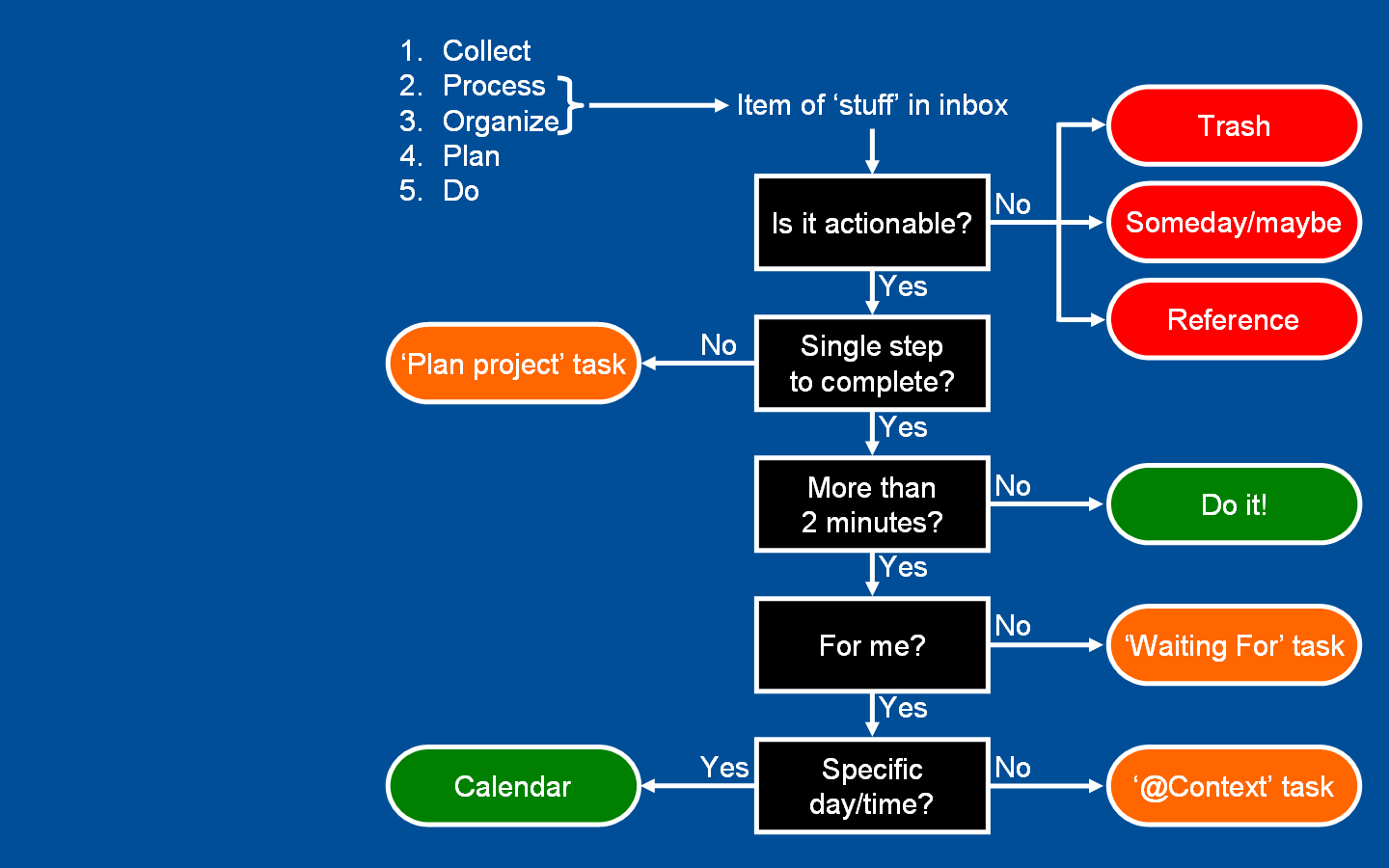Getting Things Done: The Art of Stress-Free Productivity

Getting Things Done, often abbreviated to GTD, is a time-management philosophy by Dave Allen. First published in 2001, GTD has acquired a cult-level following amongst its adopters.
To quote from the book, at its core, the GTD method is based on three key objectives:
(1) capturing all the things that might need to get done or have usefulness for you—now, later, someday, big, little, or in between—in a logical and trusted system outside your head and off your mind; (2) directing yourself to make front-end decisions about all of the “inputs” you let into your life so that you will always have a workable inventory of “next actions” that you can implement or renegotiate in the moment; and (3) curating and coordinating all of that content, utilizing the recognition of the multiple levels of commitments with yourself and others you will have at play, at any point in time.
If that sounded like the most boring word salad you're ever read, you're not alone. While the GTD philosophy has transformed my life, the book itself has been one of the most mind-numbing reads for me. I believe it might have taken me over 3 years to read.
Rest of this post is just quotes from the book's Wikipedia page, which I believe does a good enough job summarizing the key ideas in this book:
-
Reduce stress and increase productivity by putting reminders about everything you are not working on into a trusted system external to your mind. In this way, you can work on the task at hand without distraction from the "incompletes".
-
The system in GTD requires you to have the following tools within easy reach. These tools can be physical or electronic as appropriate (e.g., a physical "in" tray or an email inbox):
- An inbox
- A trash can
- A filing system for reference material
- Several lists
- A calendar.
-
The GTD workflow consists of five stages: capture, clarify, organize, reflect, and engage. Once all the material is captured in the inbox, each item is clarified and organized by asking and answering questions about each item in turn as shown in the black boxes in the logic tree diagram:

-
The most important thing I took away from GTD is the "2-minute rule": if it can be done in less than 2 minutes, just do it now. If not, file it away.
-
As a last step, reflection occurs. Multi-step projects identified above are assigned a desired outcome and a single "next action". Finally, a task from your task list is worked on unless the calendar dictates otherwise. You select which task to work on next by considering where you are (i.e., the "context", such as at home, at work, out shopping, by the phone, at your computer, with a particular person), time available, energy available, and priority.
This is pretty much it. The book is 300 pages long and goes on about every detail of the workflow, but I think keeping the diagram in mind might be sufficient for most of us. Before you ask, my tool of choice for implementing GTD is Things, which I absolutely love — it costs ~$80 across Mac and iPhone, but it's also one of the best investments I've ever made.
This is #57 in a series of book reviews published weekly on this site.